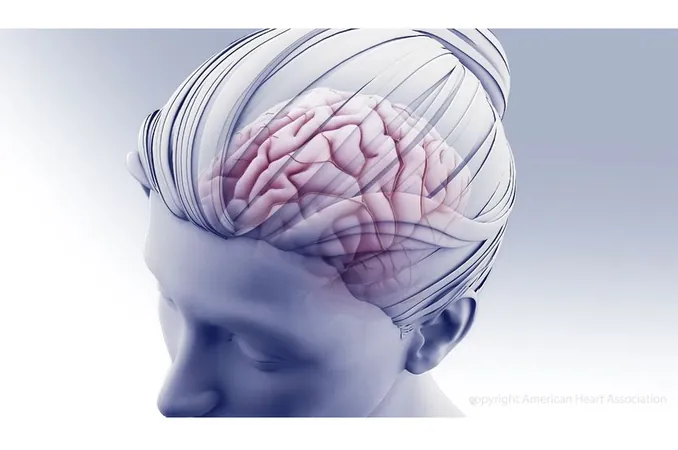
Unmasking the Hidden Stroke Risks: Are Young Adults in Peril?
2025-04-17
Author: Sarah
Revealing Alarming New Research on Stroke Risks for Young Adults
A groundbreaking study has unveiled that for adults aged 18 to 49—particularly those born with a heart defect known as patent foramen ovale (PFO)—the leading indicators of strokes are not the usual suspects like high blood pressure, but rather enigmatic factors such as migraines and chronic illnesses. This revelation is critical as strokes among this younger demographic are on the rise.
The Surprising Role of Migraines
Among the factors examined, migraines with aura stood out, especially in women, as the top nontraditional risk contributor to what doctors term 'cryptogenic strokes'—strokes of unknown origin. Research published in the journal *Stroke* indicates that young adults face more than double the risk from these nontraditional factors compared to classic risks found in older populations.
The Startling Statistics
Dr. Jukka Putaala, leading the study from Helsinki University Hospital, emphasized that nearly half of all ischemic strokes in younger adults lack a clear cause. The alarming trend indicates that while traditional factors affect men and women without PFO, nontraditional factors—like blood clots, migraines, and chronic health issues—are particularly dangerous for those who do have this heart defect.
The Data Breakdown
In a comprehensive analysis of over 1,000 participants, the study illustrated that traditional risk factors accounted for about 65% of strokes in individuals without a PFO. In stark contrast, for those with the defect, nontraditional risk factors surged to 49%. Intriguingly, migraines played a pivotal role, contributing significantly to the increased risk for strokes in both categories.
Women's Unique Stroke Risks
The analysis also revealed that risk factors specific to women—like complications related to pregnancy—add an extra layer of peril, emphasizing the need for gender-specific assessments in young stroke patients. Dr. Tracy Madsen highlighted the importance of reevaluating traditional screening processes to incorporate these newfound insights about women’s health and risk factors.
Calls for a New Approach to Stroke Prevention
The study’s findings advocate for a tailored approach to stroke prevention strategies, particularly in younger populations. Doctors are encouraged to question young women about their migraine history and other nontraditional risks during medical evaluations.
A Warning Not to be Ignored
As stroke rates rise among younger adults, these revelations serve as a dire warning to health care providers and patients alike. Understanding and addressing these nontraditional factors could potentially save lives and reshape the current approach to stroke risk management.
Study Limitations and Context
Despite its significant findings, researchers noted limitations, including its observational nature and reliance on self-reported data, which raises questions about accuracy. Moreover, the homogeneity of the participants—predominantly white Europeans—may restrict the broader applicability of the results.
Final Thoughts
This study underscores the urgent need for a shift in how we view stroke risks in young adults. With strokes increasingly affecting those under 50, proactive screening for nontraditional risk factors must become part of standard care. As we strive to save lives, every insight into these hidden dangers brings us a step closer to effective prevention.



 Brasil (PT)
Brasil (PT)
 Canada (EN)
Canada (EN)
 Chile (ES)
Chile (ES)
 Česko (CS)
Česko (CS)
 대한민국 (KO)
대한민국 (KO)
 España (ES)
España (ES)
 France (FR)
France (FR)
 Hong Kong (EN)
Hong Kong (EN)
 Italia (IT)
Italia (IT)
 日本 (JA)
日本 (JA)
 Magyarország (HU)
Magyarország (HU)
 Norge (NO)
Norge (NO)
 Polska (PL)
Polska (PL)
 Schweiz (DE)
Schweiz (DE)
 Singapore (EN)
Singapore (EN)
 Sverige (SV)
Sverige (SV)
 Suomi (FI)
Suomi (FI)
 Türkiye (TR)
Türkiye (TR)
 الإمارات العربية المتحدة (AR)
الإمارات العربية المتحدة (AR)